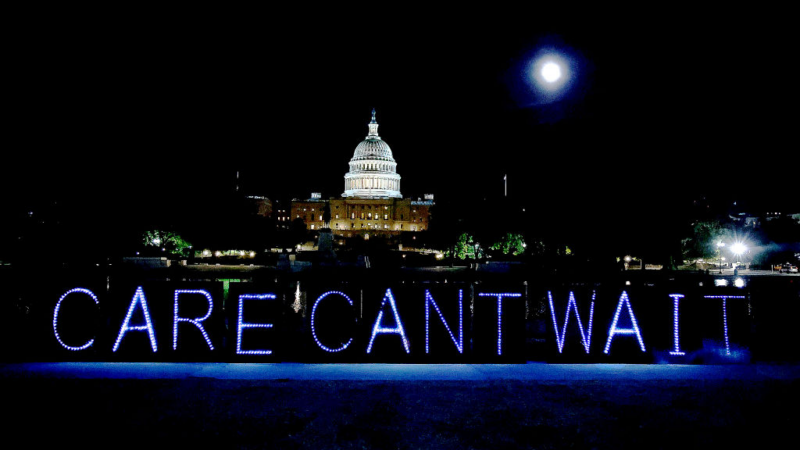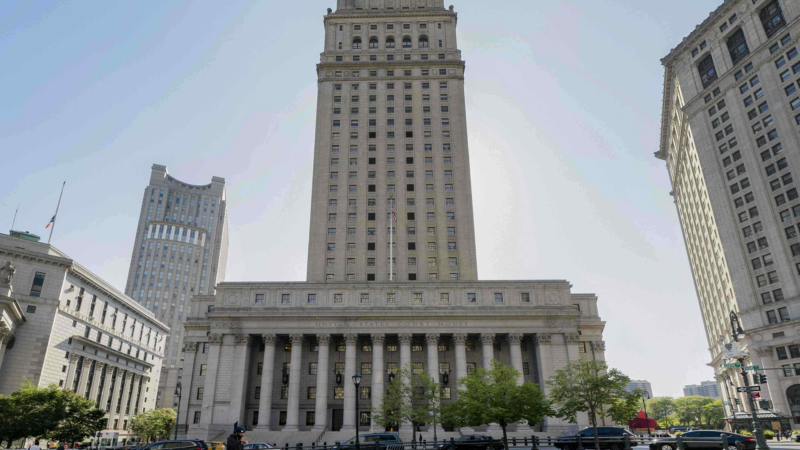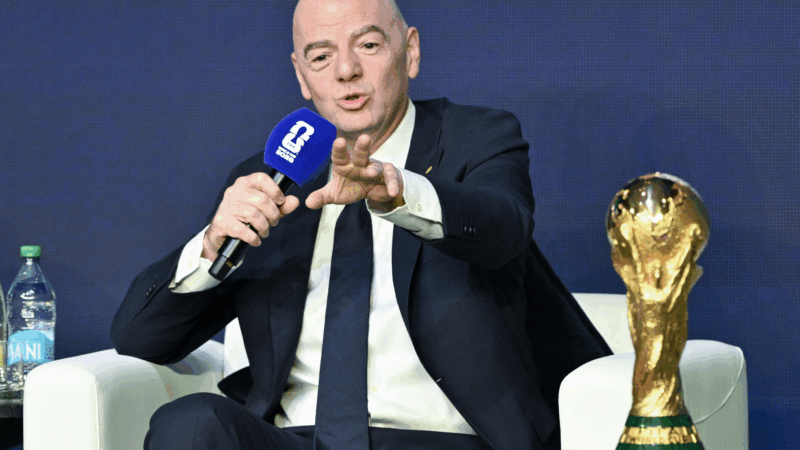The WNBA’s success last year wasn’t a fluke. Now, the league and its players want to cash in
INDIANAPOLIS — You couldn’t deny the scale of last season’s success in the WNBA, where ratings and attendance hit historic highs amid the boom in interest in women’s sports — especially basketball — as the phenomenon Caitlin Clark made her debut.
But there were questions about whether the growth would be sustainable — or if it would prove temporary, a passing trend.
Now, halfway through the 2025 season, the WNBA is on a victory tour. TV ratings are even higher than last year, up 23% across the board. Attendance has also kept climbing, with games on average seeing 13% more fans than last year and total ticket sales up 26% overall with the debut of the league’s 13th team, the Golden State Valkyries.
The league is seizing its moment, with an ambitious plan to expand to 18 teams by 2030.
“We knew big things were coming. We didn’t know the speed at which they were going to come, or the level, but we were ready for whatever came our way,” said Phil Cook, the league’s chief marketing officer. “We knew how great the game was. We knew how amazing the athletes were. We knew it was the best basketball in the world. And we just needed to unlock access to a fan base that didn’t yet recognize or see that.”
And the players, too, are seeking their own share of the success, with a push for a transformative union agreement that will end a legacy of low salaries. The WNBA’s minimum salary this year is about $66,000.
“This is no laughing matter. This is no trend, this is no moment in time,” said A’ja Wilson, the Las Vegas Aces star and three-time league MVP. “You’re dealing with me, my livelihood, my future, the next generation. So we’re going to take this very, very seriously.”
A more sophisticated business strategy
This weekend’s All-Star festivities in Indianapolis are a clear indicator of the league’s growth. Two years ago, about 96,000 fans voted to send Wilson to the All-Star Game, which sold only about three-quarters of the 12,000-seat arena in Las Vegas.
This year, Clark won the vote with nearly 1.3 million fan ballots, and the 18,000 seats in Indianapolis’ Gainbridge Fieldhouse sold out months ahead of tonight’s game.
Besides attendance and ratings, other metrics are up, including merchandise sales and social media engagement. League officials say that’s a result of savvy business strategy, including improvements to digital offerings, expanded broadcast access to games and efforts to build fanbases, such as scheduling preseason games in star players’ college towns.
Last month, Commissioner Cathy Engelbert announced the coming of expansion teams in Cleveland, Detroit and Philadelphia in 2028, 2029 and 2030. Two other new franchises, the Toronto Tempo and Portland Fire, were already set to join the league next season. In all, the WNBA will eventually comprise 18 teams, the largest the league has ever been.
The three newest teams will pay expansion fees of $250 million each — five times the amount paid just two years ago by the Valkyries. Next season, the league’s record-breaking $2.2 billion media rights deal, which the WNBA says is the largest in the history of women’s sports, will kick in. And league executives tout a growing list of lucrative brand partnerships from Coach to Bumble to Ally Bank.
Among league officials, there is a confidence that the upward trend will only continue. SVP and Chief Growth Officer Colie Edison pointed to the success of the Valkyries, which has become the league’s most-attended team in its first season on the backs of 10,000 season ticket holders, only 4% of whom overlap with the Golden State Warriors.
“We’re seeing that this is a new fan who other [leagues] can’t reach,” Edison said.
Opportunities missed?
Not everybody in the basketball business was always a believer. Minnesota Lynx head coach Cheryl Reeve, who has worked around the league since 2001, told reporters Friday that she believed the current success could have been even greater had NBA-affiliated WNBA franchises not faced skepticism in previous years.
“There’s been this long undertone of, ‘Yeah, the WNBA is nice and everything, but it’ll never become mainstream.’ That sort of undertone put us in a position that maybe, when it was time to capitalize, that we missed on some things,” Reeve said. “Now some of those same people are going, ‘Oh, there’s money in it now.’ “
The league’s average attendance has risen rapidly — its current average of more than 11,000 fans per game is currently around double that of 2022. But some franchises, like the Washington Mystics and Atlanta Dream, are limited by playing in arenas that seat only a few thousand fans, reflecting what was once a widely held belief that WNBA teams weren’t capable of filling full-size arenas. Now, those teams frequently move games to larger arenas when teams like Clark’s Fever and the Chicago Sky, with its star Angel Reese, come to town.
Another noticeable change is the renewed interest of NBA ownership groups. When the WNBA first launched, all of its franchises were, by rule, owned by NBA team owners. That changed in the early and mid-2000s, when public interest in the league faltered and ownership groups began to sell off their WNBA franchises.
Last year, only five of the league’s 12 teams had an NBA owner. Now, that trend is reversing: The Golden State Valkyries share ownership with the Golden State Warriors, and each of the three new teams announced last month will be owned, in whole or part, by the owners of the Cleveland Cavaliers, the Detroit Pistons and the Philadelphia 76ers.
Talks about a new collective bargaining agreement
The rapid growth has also upped the stakes for negotiations over a new collective bargaining agreement between the owners and players. The current agreement expires at the end of October.
The biggest sticking points, players say, are issues of money: salaries, revenue sharing and what’s called “prioritization” — in other words, players’ ability to play in other leagues to supplement their income, which WNBA players have long done.
“If this is the asking price and this is the TV deal, then make it make sense on the other side as well,” Breanna Stewart, the New York Liberty forward and the players’ union vice president, told reporters Friday.
Besides expansion, the league has looked to grow revenue by adding games to the schedule. This year, teams will play 44 regular season games each, and the Finals have been extended from a five-game series to a seven-game series. But the league’s traditional calendar — from mid-May to mid-October, meant to avoid stepping on the NBA season — has yet to change, meaning players must play more games each week than before.
Last week, as players and officials gathered for the All-Star Game, more than 40 players attended an in-person meeting between the two sides. Speaking to reporters this week, players raised questions about injuries, roster sizes and officiating.
“If we’re going to be adding all of these expansion teams very quickly — which is great, it means the game is growing — but at the same time, I hope we’re doing it in a responsible way,” said Gabby Williams, a forward for the Seattle Storm, who pointed to the number of All-Stars forced to sit out of the game for health reasons.
That includes Clark, who sustained a groin injury last week that sidelined her from Friday’s three-point contest and tonight’s All-Star Game. Other stars have missed games this season, too, including Lynx forward and MVP frontrunner Napheesa Collier and the Dallas Wings’ Arike Ogunbowale, who scored the second-most points in the league last year.
If the two sides cannot reach agreement, they risk a work stoppage. That loss of play has proved damaging in the past to other professional sports leagues, including the National Hockey League and Major League Baseball. Such an abrupt halt to the WNBA’s momentum could prove difficult to bounce back from.
Players who have been in the league for years, including 11-year veteran Kayla McBride, are still marveling at the rapid change. “We were staying at Holiday Inn Expresses, and now we’re staying in all the Four Seasons everywhere we go,” the Lynx guard said Friday.
Still, there’s more progress to make, McBride says. She, like many other WNBA players, argue that their demands are deserved based on what they’ve done on the court.
“We’re asking for all these things in our [collective bargaining agreement], and we’re expanding, we’re doing all these amazing things, but we’re also putting on. We’re also hooping,” she said. “Our game is backing up what we’re asking for.”
Transcript:
SCOTT SIMON, HOST:
The WNBA had a challenge coming into this season. Last year was historic, with highs in ratings and attendance. Could that continue, or was that turnout just a blip? With the league’s all-Star weekend underway, NPR’s Becky Sullivan went to see how it’s going.
BECKY SULLIVAN, BYLINE: The Indianapolis Fieldhouse was packed last night for the 3-point contest. I talked to people who flew in from Minneapolis and California and drove in from Ohio and Chicago, and a lot of these thousands of fans have dialed in over just these last two years. James Rivers (ph) and his 15-year-old son, also James, live here in Indianapolis, but they thought seeing Friday’s action and then tonight’s All-Star game here at home would be a special occasion.
JAMES RIVERS: We booked it – booked hotel rooms. We did it just like we were out-of-towners. Just – the game is just elevated for the ladies, period.
SULLIVAN: They’re all part of this rapid and meteoric rise in popularity for the WNBA. Take the fan vote for the All-Star game as an example. Two years ago, Las Vegas Aces star A’ja Wilson got about 96,000 votes, more than any other player. And second year Indiana Fever superstar Caitlin Clark, who won the vote, got nearly 1.3 million ballots.
In other words, we’re halfway through the season, and it’s now clear that last year’s boom wasn’t a one-off, says, WNBA chief marketing officer Phil Cook.
PHIL COOK: I’d be remiss to say that we knew this was going to happen to this scale. We knew big things were coming. We didn’t know the speed at which they were going to come or the level, but we were ready for whatever came our way.
SULLIVAN: Now it’s paying off. Viewership is up 23% over last year. Overall attendance is up 26%. And the league recently announced an ambitious plan to add three new teams in Cleveland, Detroit and Philadelphia in the coming years.
COOK: We knew how great the game was. We knew how amazing the athletes were. We knew it was the best basketball in the world. And we just needed to unlock access to a fan base that didn’t yet recognize or see that.
SULLIVAN: Not everybody in the basketball business was always a believer, says Cheryl Reeve. She’s the head coach of the Minnesota Lynx. Her career in the league got started back in 2001.
CHERYL REEVE: There’s been this long sort of undertone that, yeah, the WNBA’s nice and everything, but it’ll never become mainstream. I was told that. I was told that, you know, 10 years ago. And I think that sort of undertone put us in position that maybe when it was time to capitalize, that we missed on some things for sure.
SULLIVAN: Reeve didn’t give an example, but here’s one I’ll give. It used to be a common assumption that WNBA teams weren’t capable of filling full-size arenas. So even as the league’s average attendance now tops 11,000 fans per game, some teams are locked into home arenas that only seat three or 4,000.
REEVE: You know, some of those same people are going, oh, oh, there’s money in it now. And so, you know, that’s the nature of women in business, women in sport, women in politics. It’s all the nature of it.
SULLIVAN: Now the WNBA is raking in expansion fees of $250 million per team. There’s also the new $2.2 billion media rights deal that’s set to begin next year, plus a parade of new high-end brand partners, like Coach and Bumble and Ally Bank. That’s a lot of new money flowing in, and now the players want a bigger piece of it. Here’s Breanna Stewart, a forward for the New York Liberty who’s the vice president of the players’ union.
BREANNA STEWART: Knowing the numbers and what we’re hearing about how much it costs to buy in and to be a part of this league, like, it’s kind of, like, all right, if this is the asking price and this is the TV deal, then make it makes sense on the other side as well.
SULLIVAN: The WNBA’s minimum salary this year is about $66,000. Those low salaries and how much of the revenue to share with players are two of the biggest sticking points in negotiations over a new collective bargaining agreement that are happening now. Some things have already gotten better, says Kayla McBride of the Minnesota Lynx, who first joined the league back in 2014.
KAYLA MCBRIDE: We were staying in Holiday Inn Expresses, and now we’re staying in all the Four Seasons everywhere we go. And so I think it’s just changed so much.
SULLIVAN: But there’s more progress to make, she says. She thinks what they’re asking for is deserved, based on what they’re doing on the court.
MCBRIDE: We’re asking for all these things in our CBA, and we’re expanding, we’re doing all these amazing things, but we’re also putting on. We’re also hooping. And I think that that’s, like, been the best part, just to see, like, that our game is, like, backing up what we’re asking for and what we’re looking for. And all the hype is real.
SULLIVAN: The union contract expires at the end of October. By then, if this pace keeps up, nearly 2 million more fans will have come to see her and her fellow players on the court.
Becky Sullivan, NPR News.
(SOUNDBITE OF MUSIC)
China flexes blockade capabilities near Taiwan on second day of military drills
China's People's Liberation Army is staging a second day of large-scale military drills around Taiwan. It's unleashing live-fire exercises as part of what it calls "Justice Mission 2025."
Policy relief for family caregivers seems stalled out. But there are signs of change
Family members carry the burden and costs of caring for America's aging population. Federal policy change is slow to come but a new movement and state actions are building momentum.
Federal appeals court judge is accused of bullying her clerks
The Legal Accountability Project complaint, which has not been previously reported, states that it is based on conversations with multiple former law clerks.
How Alabama Power has left the ‘American Amazon’ at risk
As its polluting coal ash ponds remain in groundwater, Alabama Power has doubled down on fossil fuel energy investments.
How George Wallace and Bull Connor set the stage for Alabama’s sky-high electric rates
After his notorious stand in the schoolhouse door, Wallace needed a new target. He found it in Alabama Power.
FIFA president defends World Cup ticket prices, saying demand is hitting records
The FIFA President addressed outrage over ticket prices for the World Cup by pointing to record demand and reiterating that most of the proceeds will help support soccer around the world.









